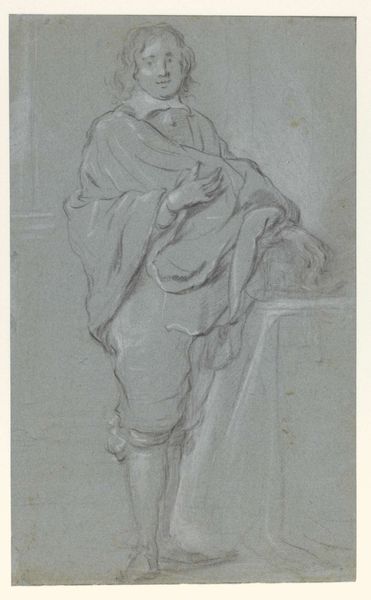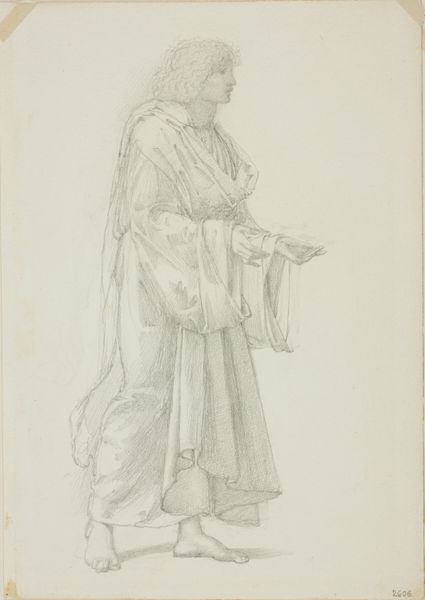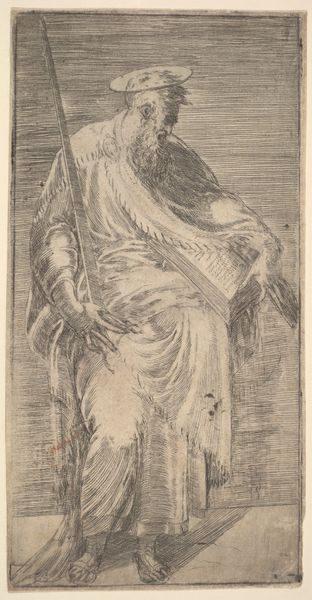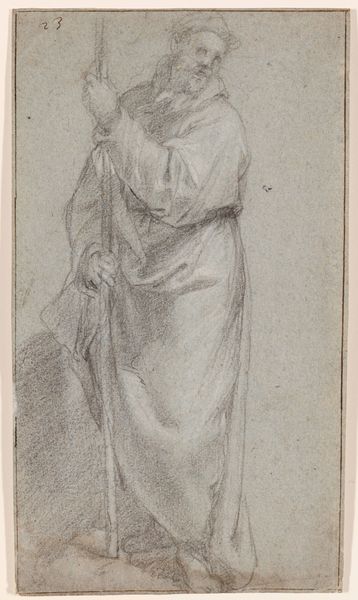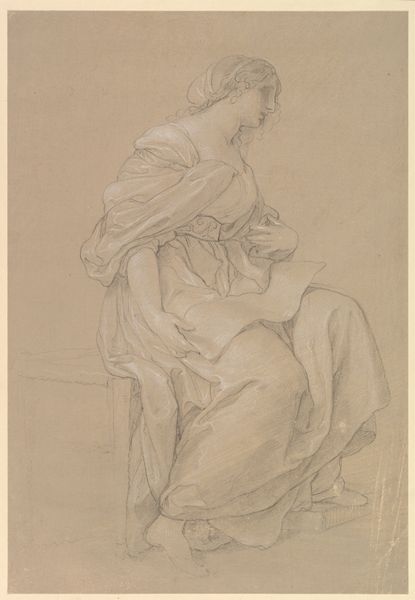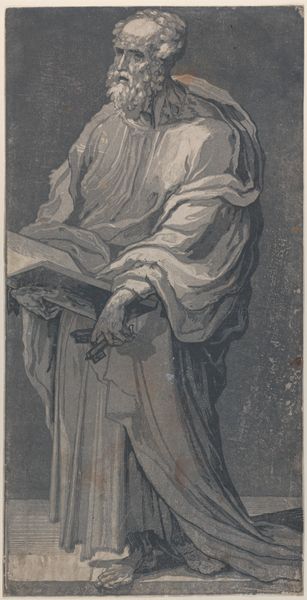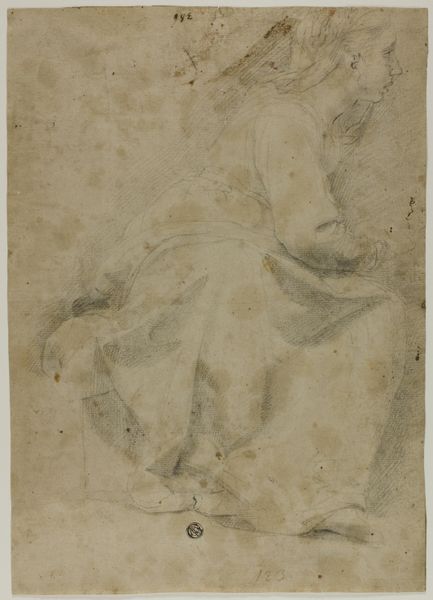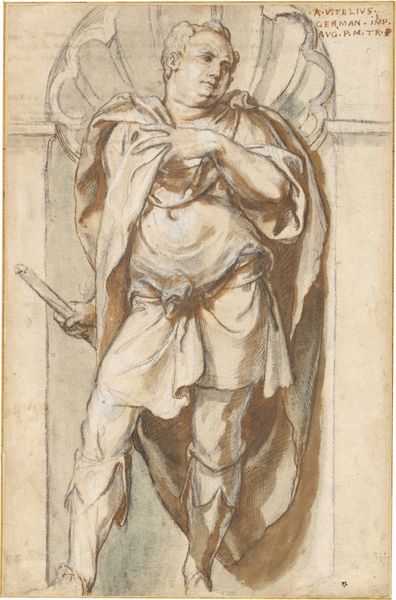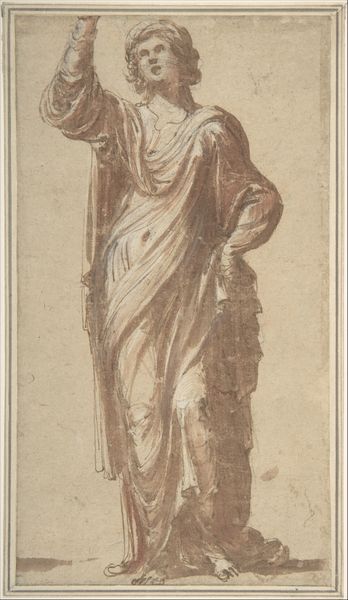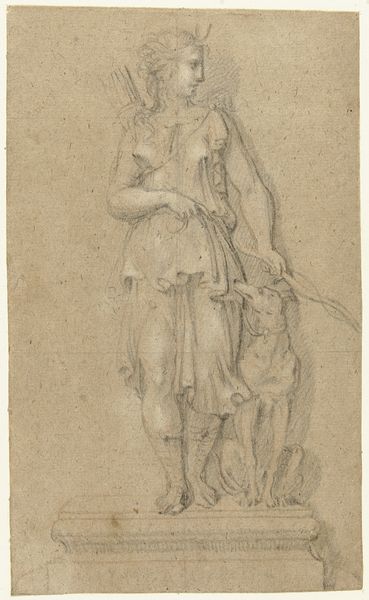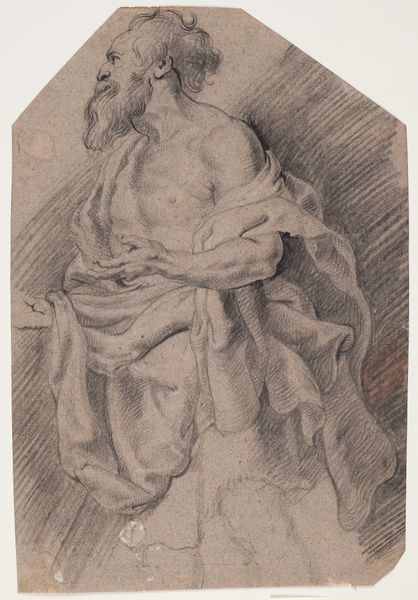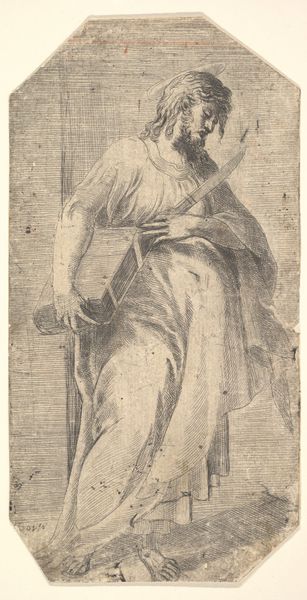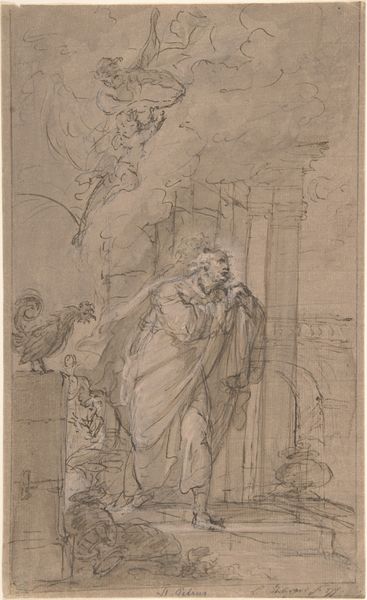
drawing, paper, ink, indian-ink
#
drawing
#
figuration
#
paper
#
11_renaissance
#
ink
#
indian-ink
#
chiaroscuro
#
history-painting
#
italian-renaissance
Copyright: Public Domain
Curator: This is "Saint Anton," a drawing by Hans Speckaert, dating from about 1565 to 1569. It’s currently held at the Städel Museum. What are your initial thoughts on it? Editor: It feels…contemplative. There’s a stillness in the figure, and the limited color palette creates a subdued, almost melancholic mood. The loose, flowing lines add a sense of movement and immediacy to the figure despite his stationary pose. Curator: Absolutely. Now, considering Speckaert was active during the Italian Renaissance, we can place this drawing within a tradition where depictions of religious figures were common. How does Speckaert’s rendering speak to or diverge from other images of the Saint? Editor: I find it intriguing to look at this piece through the lens of power dynamics inherent in religious imagery. We have Saint Anton with the opened book standing above an animal. Who has access to the text? Who benefits from religious knowledge and the visual representation thereof? The lion could suggest he presides over the wild or, perhaps, more radically, it indicates a potential taming of base impulses. Curator: Yes, the symbolisms here are deep and relevant within the socio-religious atmosphere of the period. Saint Anthony Abbot, also known as Saint Anthony the Great, was central to monastic life, with an interesting power over the world and animal realm through belief. His image became a cultural artifact, reflective of those power dynamics. Editor: Right. And Speckaert seems keenly aware of that potential, imbuing his subject with a complex vulnerability beneath that veneer of dominance. Even his very fine, yet quick, linework gestures toward accessibility. The open book could be an invitation of sorts. Curator: Indeed. The placement of Saint Anthony with the text reflects and shapes contemporary beliefs about the roles of knowledge and belief. In addition to using brown ink on paper to create his suggestive Chiaroscuro aesthetic, Speckaert’s choice of figuration allows for art to invite larger narratives about spirituality in that era. Editor: It encourages reflection on these constructs—questioning, perhaps, the narratives that shaped that particular moment in time as well as in our contemporary framework. Thanks for walking me through this; the ability to look at both image and the construction of belief makes this all the more vibrant. Curator: My pleasure. The interplay between the artwork and the currents of belief is always such fertile ground for understanding.
Comments
No comments
Be the first to comment and join the conversation on the ultimate creative platform.
